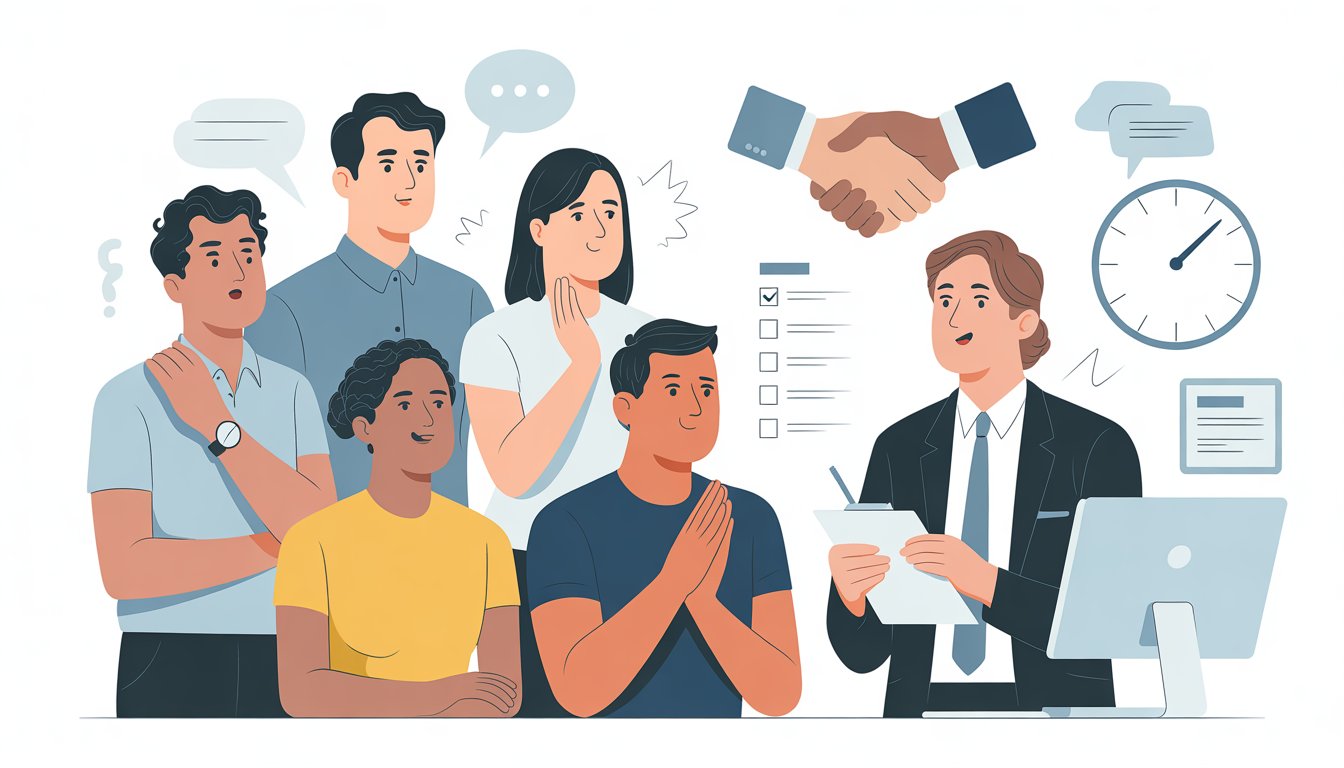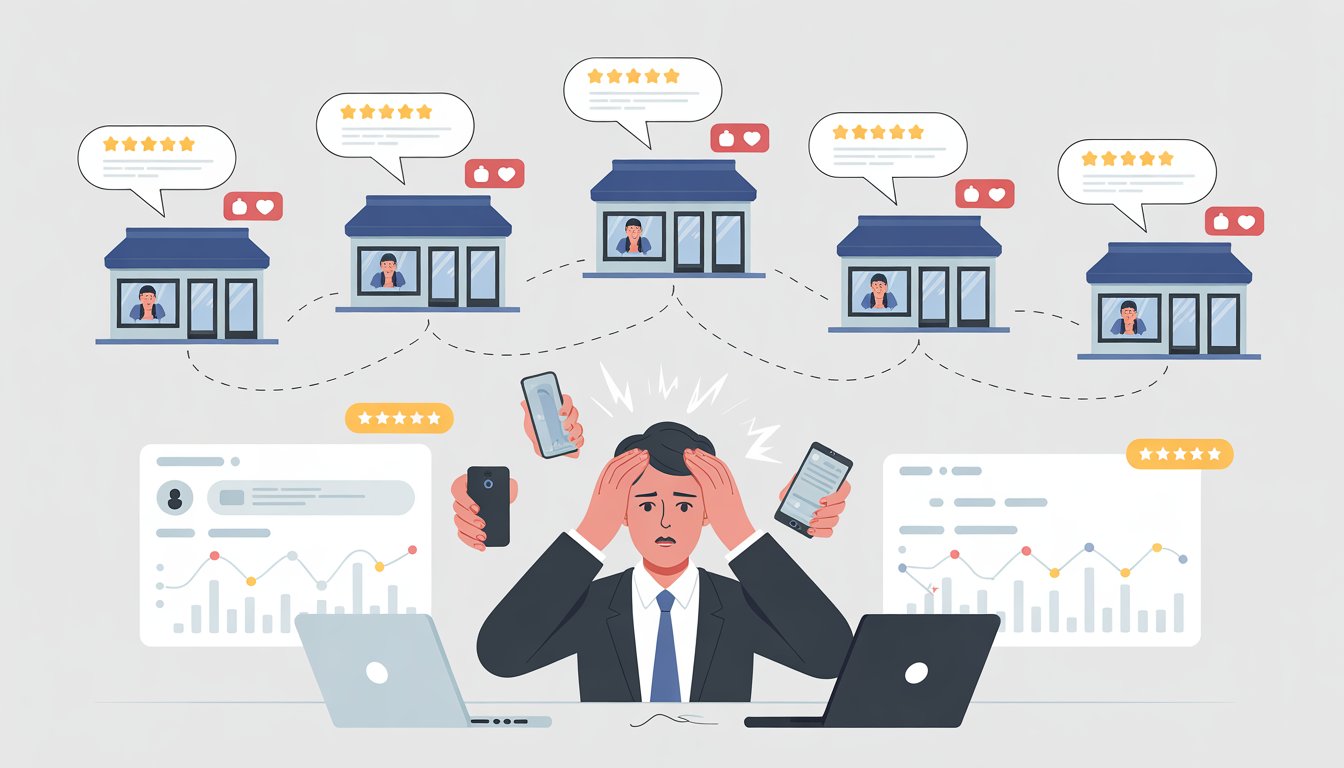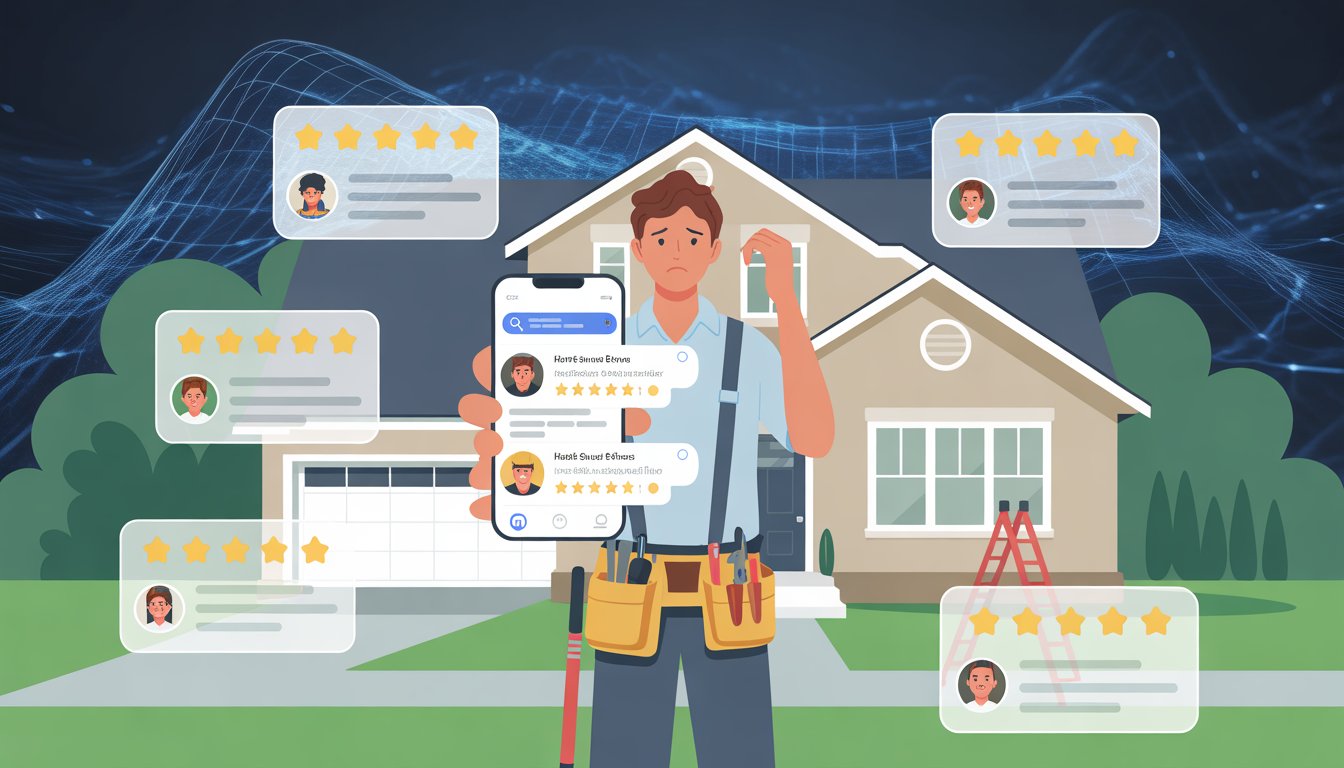When customers write a negative review, they're not just venting their frustration into the void. They have specific expectations about how you will respond and what actions you will take to fix their problem.
Understanding what customers want when they leave negative feedback can help you turn bad experiences into opportunities to build stronger relationships.

Most customers who leave negative reviews expect three things: a quick response that shows you care, genuine recognition of their problem, and concrete steps to make things right. They want to feel heard and validated, not ignored or dismissed.
Many customers also hope their feedback will prevent other people from having the same bad experience.
The good news is that meeting these expectations doesn't require complex strategies or huge budgets. When you respond to negative reviews the right way, you can often turn unhappy customers into loyal advocates for your business.
You might even convince them to update their original review with positive comments about how well you handled their complaint.
Key Takeaways
- Customers expect quick responses, empathy, and concrete solutions when they leave negative reviews
- Proper handling of negative feedback can transform unhappy customers into loyal brand advocates
- Negative reviews become growth opportunities when businesses use them to improve their products and services
Core Customer Expectations After Leaving a Negative Review

When customers take time to write negative reviews, they have specific needs that go beyond just venting frustration. Most expect a meaningful response within 24-48 hours and want businesses to show they understand the problem and care about fixing it.
Desire for a Resolution or Solution
Customers who leave negative reviews want their problems fixed. They expect businesses to take action, not just acknowledge the complaint.
87% of customers expect brands to do something after they write a negative review. This might mean:
- Offering a refund or replacement
- Providing store credit or discount
- Fixing the specific problem they mentioned
- Changing policies that caused the issue
Most people are willing to do business with a company again after a bad experience. Many will even delete their negative comments once they get a proper fix.
The key is showing real effort to solve their problem. Empty promises don't work.
Customers can tell when businesses actually care versus when they're just going through the motions.
Quick fixes that work:
- Direct contact from customer service
- Immediate refunds when appropriate
- Product replacements sent fast
- Clear explanation of what went wrong
Expectation of a Timely Response
Speed matters when responding to negative reviews. Customers expect to hear back within 24-48 hours, not weeks later.
54% of shoppers who write negative reviews expect a company response. Waiting too long sends the wrong message.
It suggests you don't care about customer feedback.
Fast responses show you're paying attention. They also prevent small problems from getting bigger.
Other potential customers are watching too.
Best response times:
- Within 24 hours for serious complaints
- Same day for service issues
- Within 48 hours maximum for any negative review
Ignoring negative reviews completely is even worse than responding late. It tells future customers that you don't value their opinions or experiences.
Hope for Empathy and Understanding
Customers want to feel heard when they leave negative reviews. They need businesses to show they understand the frustration and disappointment.
Real empathy means more than saying "sorry for the inconvenience." It means acknowledging the specific problem and how it affected them.
Use the customer's name in your response. Reference their exact issue.
This shows you actually read their complaint instead of using a generic template.
Avoid getting defensive or making excuses. Even if the complaint seems unfair, showing understanding builds trust with both that customer and others reading your response.
Empathetic response elements:
- Personal acknowledgment of their experience
- Validation of their feelings
- Specific reference to their complaint
- Sincere apology without blame-shifting
Remember that 89% of consumers read responses to negative reviews. Your empathy shows everyone how you treat customers when things go wrong.
The Role of Customer Service in Addressing Negative Reviews

Customer service teams play a direct role in turning upset customers into satisfied ones after negative reviews. Quick responses and personal attention help repair damaged relationships and show other potential customers that problems get solved.
Importance of Responsiveness
Fast responses to negative reviews show customers that you care about their problems. When you reply quickly, it tells the customer that their concern matters to you.
Most customers expect a response within 24 hours of leaving a negative review. Some expect even faster replies on social media platforms.
Quick responses also show other potential customers that you handle problems well. They can see that you don't ignore complaints or let them sit without answers.
Key response timeframes:
- Social media: 1-4 hours
- Review sites: 24 hours
- Email complaints: 24-48 hours
When you respond fast, you can often stop one bad experience from turning into multiple negative reviews. Customers appreciate when businesses take action right away.
Personalized Communication
Generic responses make customers feel like just another complaint number. Personal responses show that you read their specific problem and care about fixing it.
Use the customer's name when possible. Reference the exact issue they mentioned in their review.
This shows you paid attention to their complaint.
Avoid copy-and-paste responses that sound like templates. Customers can tell when responses are fake or automated.
They want to feel heard as individuals.
Personal response elements:
- Customer's name
- Specific problem details
- Acknowledgment of their feelings
- Clear next steps
When you write personal responses, other customers see that you treat each person as important. This builds trust with people who haven't used your business yet.
Avoiding Long Wait Times
Long wait times make angry customers even more frustrated. When someone leaves a negative review, they're already upset about their customer experience.
Set up systems to catch negative reviews quickly. Use review monitoring tools or assign team members to check review sites daily.
Have clear processes for who responds to different types of complaints. This prevents reviews from sitting unanswered while team members figure out whose job it is.
Train your customer service team to handle review responses. Not every team member needs this skill, but several should know how to write professional responses.
Consider having backup responders for weekends and holidays. Negative reviews don't only happen during business hours, and waiting until Monday can make problems worse.
Recognition and Validation of Customer Experience
When customers leave negative reviews, they want you to recognize their problems and validate their feelings. They need to know you heard them and understand why they are upset.
Listening to Negative Feedback
Negative feedback tells you what went wrong in your customer's journey. When you listen carefully, you show customers their voice matters.
Customers write bad reviews for specific reasons. Poor customer service ranks as the top cause.
Product quality issues come next.
Delivery problems also drive negative reviews. Customers get frustrated when items arrive late or damaged.
Here are the main reasons customers leave bad reviews:
- Poor customer service treatment
- Products that don't work as expected
- Late or damaged deliveries
- Hidden fees or pricing problems
- Trouble getting refunds
Customer feedback in reviews contains valuable details. Look for patterns in what customers complain about most.
Each negative review shows you a real problem someone faced. This information helps you fix issues before more customers have bad experiences.
Acknowledging Customer Problems
Customers want to see that you understand their problems. A simple acknowledgment can calm upset feelings.
Start by saying you see their concern. Use their specific details in your response.
This shows you read their review carefully.
Don't make excuses when acknowledging problems. Focus on understanding what the customer experience was like for them.
Your acknowledgment should include these parts:
- Recognition of their specific problem
- Understanding of how it affected them
- Acceptance that their feelings are valid
When you acknowledge problems publicly, other customers see you care. This builds trust even when things go wrong.
Validation doesn't mean you agree with everything. It means you respect their experience and want to help.
How Negative Reviews Impact Businesses and Other Customers
Negative reviews create a ripple effect that extends far beyond the original complaint. They directly damage how people view a business and strongly influence whether future customers will buy products or services.
Influence on Brand Reputation
Negative reviews can quickly destroy the trust you've built with customers over years. When people search for your business online, bad reviews often appear prominently in search results.
86% of consumers hesitate to buy from businesses with negative reviews. This statistic shows how much power online reviews have over your reputation.
A single bad review can spread quickly across the internet. Social media makes it easy for unhappy customers to share their experiences with hundreds or thousands of people.
Your brand's credibility takes a hit when customers see multiple negative reviews. People assume that where there's smoke, there's fire.
Even one detailed negative review can make potential customers doubt your quality.
The damage goes beyond lost sales. Negative reviews can:
- Lower your search engine rankings
- Reduce customer trust in your expertise
- Make it harder to attract new customers
- Hurt relationships with business partners
Effect on Future Buying Decisions
Other customers rely heavily on reviews when deciding where to spend their money. Bad reviews directly influence these buying choices in powerful ways.
Customers are 50% more likely to share bad experiences than good ones. This means negative reviews spread faster and reach more people than positive feedback.
Most shoppers read reviews before visiting a business or buying something. When they see complaints about poor service, late deliveries, or broken products, they often choose competitors instead.
The timing of negative reviews matters too. Recent bad reviews carry more weight than older ones.
A fresh complaint can immediately turn away customers who were ready to buy.
Online reviews work like word-of-mouth recommendations. People trust other customers' opinions more than advertising.
When someone writes about a bad experience, it feels honest and reliable to readers.
Smart shoppers also look for patterns in reviews. If multiple people complain about the same problem, future customers will likely avoid your business completely.
Turning Negative Feedback into Opportunities for Improvement
Negative reviews contain valuable data about your business weaknesses and unmet customer needs. Smart businesses use this customer feedback to make targeted improvements that prevent future complaints.
Using Reviews to Identify Weaknesses
Negative reviews reveal specific problems that customers face with your products or services. Look for patterns in the complaints to find your biggest issues.
Common weakness categories include:
- Product quality problems
- Poor customer service
- Shipping delays
- Website technical issues
- Unclear product descriptions
Read each negative review carefully. Note the exact problems customers mention.
Keep a simple spreadsheet to track complaint types and how often they happen.
Pay attention to detailed negative feedback. Customers who write long reviews often explain exactly what went wrong.
This gives you clear direction on what to fix.
Look beyond obvious complaints. Sometimes customers mention small issues that could become bigger problems later.
Implementing Changes Based on Reviews
Turn review insights into action plans. Focus on the most common complaints first since these affect the most customers.
Steps to implement changes:
- Fix immediate problems - Address issues you can solve quickly
- Update processes - Change how you handle problem areas
- Train your team - Teach staff about common customer needs
- Improve products - Work with suppliers to fix quality issues
Test your changes with a small group first. This helps you avoid creating new problems while fixing old ones.
Track results after making changes. Monitor new reviews to see if complaints about specific issues decrease.
This shows whether your improvements actually work.
Set up systems to catch problems before customers complain. Regular quality checks and staff training help prevent negative feedback from happening.
Customer Expectations for Follow-Up and Continued Engagement
When customers leave negative reviews, they expect businesses to provide clear information about what happens next and offer meaningful solutions to address their concerns.
Clear Communication of Next Steps
Customers who leave negative reviews want to know exactly what your business will do to fix their problem. They expect you to explain the process step by step.
Tell customers when they can expect updates. Give specific timeframes like "within 24 hours" or "by Friday."
Don't use vague phrases like "soon" or "as quickly as possible."
Your communication should include:
- Timeline for resolution
- Who will handle their case
- How you will contact them
- What information you need from them
Send regular updates even if there's no new progress. A simple message saying "we're still working on your case" shows you haven't forgotten them.
Use the same communication method the customer prefers. If they contacted you through email, respond by email.
If they posted on social media, reply there first, then move to private channels.
Keep your language simple and direct. Avoid technical terms or company jargon that might confuse customers.
Offering Compensation or Other Solutions
Customers expect businesses to make things right when problems occur. The solution should match the size of the problem they experienced.
Common compensation options include:
- Full or partial refunds
- Product replacements
- Store credit or vouchers
- Free shipping on future orders
- Service upgrades
Don't wait for customers to ask for compensation. Offer solutions proactively in your first response.
This shows good customer service and can prevent further complaints. Make sure your solution actually fixes the customer's problem.
If someone received a broken product, they want a working replacement, not just an apology. Some customers might prefer non-monetary solutions.
These could include policy changes, staff training, or process improvements that prevent future issues. Always follow through on your promises.
If you say you'll send a replacement, make sure it arrives when promised. Failed follow-through often leads to even worse reviews.
The Value of Positive Reviews Following Resolved Issues
When customers leave positive reviews after you resolve their problems, these reviews become powerful trust signals. They show future customers that your business takes complaints seriously and fixes issues quickly.
Encouraging Positive Follow-Up Reviews
Reaching out to customers after fixing their problems can lead to updated reviews. Send a follow-up email 1-2 weeks after resolving their issue.
Ask if their experience improved and if they would consider sharing their updated thoughts. Make the process easy for them.
Include direct links to review platforms in your follow-up message. Thank them for giving you the chance to make things right.
Some customers will update their original negative review to positive. Others might leave a brand new positive review.
Research shows that 34% of customers who are satisfied with your response will delete their original negative review. This creates immediate improvement in your review profile.
You can also offer small incentives like discount codes for future purchases. This shows appreciation for their patience while encouraging them to share their improved customer experience.
Building Long-Term Customer Trust
Positive reviews that mention problem resolution are especially valuable. They tell other customers exactly what to expect if issues arise with your business.
These reviews often include phrases like "great customer service" or "they made it right." Future customers see this and feel confident about buying from you.
Customers who leave positive follow-up reviews often become loyal buyers. 70% of unhappy customers will keep doing business with brands that resolve their complaints.
These repeat customers typically spend more money over time. The trust you build extends beyond just that one customer.
Other shoppers reading these reviews see proof that you care about fixing problems. This makes them more likely to choose your business even if they see some negative reviews mixed in.
Frequently Asked Questions
Customers have clear expectations about how businesses should handle their complaints and feedback. Understanding these patterns helps you respond effectively and turn negative experiences into positive outcomes.
How do customers expect companies to respond to their negative reviews?
Customers expect a response within 24-48 hours of posting their negative review. 54% of shoppers who leave bad reviews expect the company to reply directly to them.
They want you to acknowledge their specific problem by name. Generic responses feel impersonal and make customers more frustrated.
87% of customers expect businesses to take action after receiving negative feedback. This could mean offering a discount, fixing the problem, or making changes to prevent it from happening again.
Your response should show empathy and avoid being defensive. Customers want to feel heard and validated, even when their complaint seems unreasonable.
What psychological factors drive customers to leave negative reviews?
Negative experiences create stronger emotions than positive ones. This is why customers write bad reviews more often than good ones.
Only 20% of negative reviews focus on actual product quality problems. The other 80% complain about poor customer service or bad experiences.
Some customers leave public negative reviews to pressure businesses into responding. A public complaint gets more attention than a private message to customer service.
Customers often want to warn other shoppers about potential problems. They see themselves as protecting others from having the same bad experience.
Are customers seeking resolution or venting frustration when they write bad reviews?
Most customers want both resolution and a chance to express their frustration. They hope the business will fix their problem and prevent it from happening to others.
Many customers will remove or update their negative review if the business responds well and solves their issue. Some customers use negative reviews to get faster customer service.
Public complaints often get quicker responses than private support tickets. Customers also want validation that their complaint is reasonable.
A thoughtful response from the business can satisfy this need even if the original problem can't be fixed.
What impact do negative reviews have on a business's reputation and sales?
89% of shoppers read reviews before making purchases. They pay close attention to both positive and negative feedback when deciding what to buy.
60% of customers think negative reviews are just as important as positive ones. Bad reviews help them understand potential problems before purchasing.
One negative review usually won't hurt your business much. However, multiple bad reviews about the same issue can seriously damage your reputation.
Businesses that respond to negative reviews actually build more trust with customers. 89% of consumers read company responses to bad reviews.
How should a business handle a negative review to satisfy upset customers?
Start by using the customer's name and acknowledging their specific problem. This shows you read their complaint carefully and care about their experience.
Apologize for their bad experience, even if you don't think the complaint is fair. Focus on the customer's feelings rather than defending your business.
Keep your response short and direct. Long explanations can sound defensive and make the situation worse.
If you need more information to help them, ask them to contact customer service privately. Include your phone number or email address in the response.
Can a pattern of negative reviews indicate deeper issues within a company's product or service?
Yes, repeated complaints about the same problem usually point to real issues that need fixing.
Smart businesses track these patterns to improve their products and services.
66% of retailers use negative review feedback to make their products better.
50% use this information to improve their marketing and customer communication.
Common patterns include shipping problems, sizing issues, product defects, or poor customer service training.
These problems require changes to your business operations.










